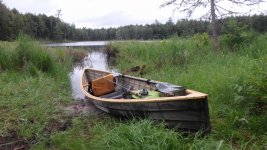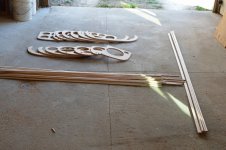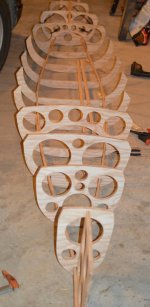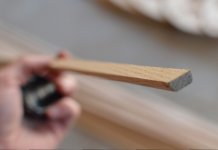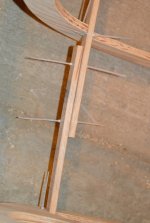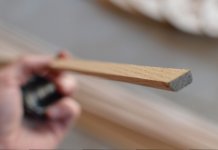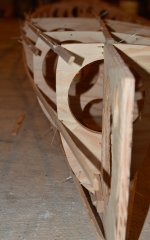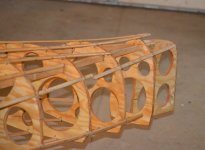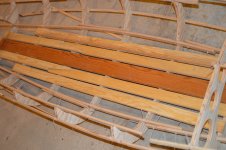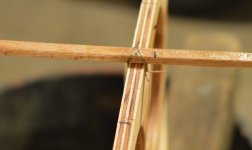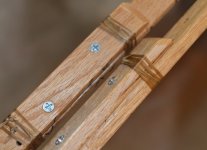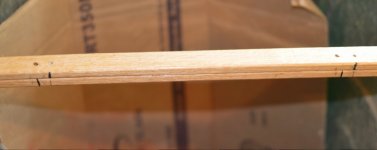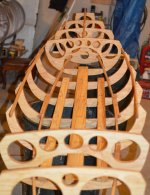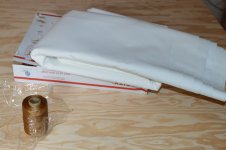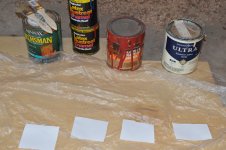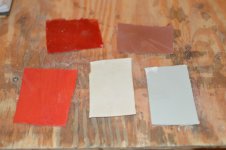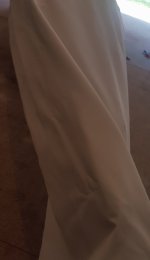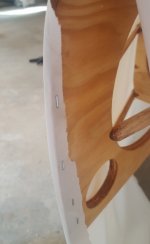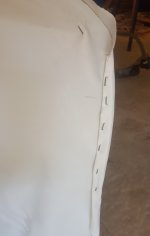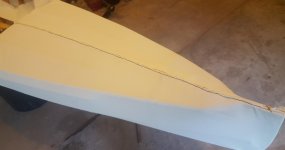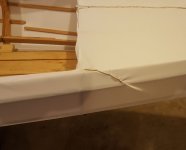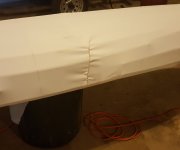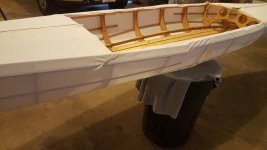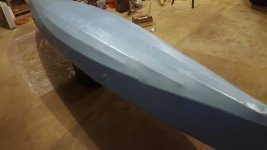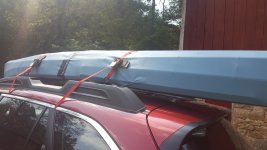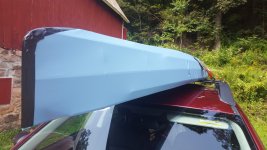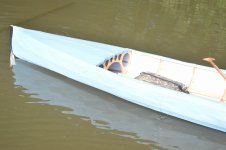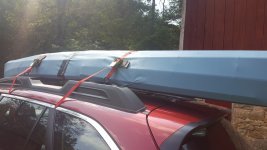I'd been wanting to build my latest hull idea, but was not willing to commit to the time (& cash expense!) of another stripper at this time. Happened to meet Nick Schade at Canoecopia, and took some interest in his current project, a skin-on-frame kayak kit.
I took some inspiration from there, some from other SOF builds around the internet, and decided that I could probably do a fairly quick-and-dirty build for around $120 cash outlay. (I salvaged/scrounged material from some of the family stockpile, so duplicating this build will be somewhat more expensive.)
Note: this build will not be as pretty, nor as light as it could be. I decided to compromise on both a bit for a more expedient build, so that I can test out the hull shape. I'll explain where I could have been fancier when I reach those points.
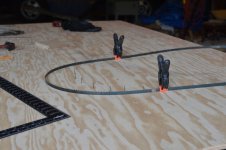
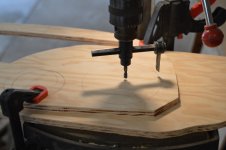
Starts off looking fairly conventional, but whats up with the hole cutter?
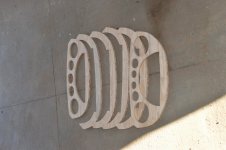
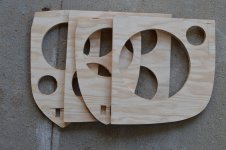
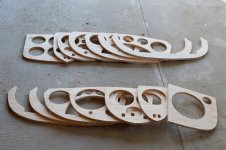
This is the bit that I picked up from Nick's kit project. Unlike most Skin On Frame, these are not a temporary form. Instead, they are a permanent part of the canoe. These stations are made of a Fir ply, with a semi-marine adhesive. (real marine ply would have been custom order and expensive. This is just a test build) You might also notice that only a few are open at the top. I decided to build this particular boat partially-decked. Total weight for the stations, after cutting out the bulk: 12.5 pounds.
This is the first point where I could have saved weight, and added elegance: Most Skin boats use forms, and then have light, steam-bent, or bent-lamination, ribs. I certainly could have done this, but that would take much more time. (perhaps the next one, if I decide I like the overall technique)
I took some inspiration from there, some from other SOF builds around the internet, and decided that I could probably do a fairly quick-and-dirty build for around $120 cash outlay. (I salvaged/scrounged material from some of the family stockpile, so duplicating this build will be somewhat more expensive.)
Note: this build will not be as pretty, nor as light as it could be. I decided to compromise on both a bit for a more expedient build, so that I can test out the hull shape. I'll explain where I could have been fancier when I reach those points.


Starts off looking fairly conventional, but whats up with the hole cutter?



This is the bit that I picked up from Nick's kit project. Unlike most Skin On Frame, these are not a temporary form. Instead, they are a permanent part of the canoe. These stations are made of a Fir ply, with a semi-marine adhesive. (real marine ply would have been custom order and expensive. This is just a test build) You might also notice that only a few are open at the top. I decided to build this particular boat partially-decked. Total weight for the stations, after cutting out the bulk: 12.5 pounds.
This is the first point where I could have saved weight, and added elegance: Most Skin boats use forms, and then have light, steam-bent, or bent-lamination, ribs. I certainly could have done this, but that would take much more time. (perhaps the next one, if I decide I like the overall technique)

